Are you planning a trip to China in 2022? China Tour Star has already planned it for you. In addition to traditional Chinese culture, if you are also interested in mysterious Tibet and cute pandas, this 12 days China tour 2022 will be your best choice. During the Beijing tour 2022, you will visit the Forbidden City where 24 emperors lived. In the Forbidden City, you will see the emperor’s throne with dragons carved on it, the emperor’s bedroom, and the emperor’s office. After visiting Beijing, you will have a Chengdu tour 2022 to get close to the cute pandas. The hometown of giant pandas is Chengdu, where you can see hundreds of giant pandas. Finally, you will go to the roof of the world, Tibet. On the Tibet tour 2022, you can not only enjoy the beautiful plateau scenery, but also experience the unique Tibetan culture. Now you only need to contact us and book this tour!

Welcome to Beijing! Our guide will wait for you at the airport arrival hall and then transfer you to the hotel. On your way to the hotel, you can have a simple look at this metropolis. As the capital of China, this time-honored city enjoys the richest cultural heritage, such as the Great Wall and the Summer Place. After you arrive at the hotel, you can have a nice rest!
Tian’anmen Square is a must-see when you visit Beijing in 2022. Today, we will first visit this famous square. Tian’anmen Square is located in the center of Beijing, on the central axis of the city. On October 1, 1949, Mao Zedong announced the founding of the People’s Republic of China in Tian’anmen Square, and personally raised the first five-star red flag of New China. On the square, there are several buildings, such as the Great Hall of the People, the Monument to the People’s Heroes, and the Chairman Mao Memorial Hall.
Then, we will visit the Forbidden City (closed each Monday). The Forbidden City, which means the imperial palace in the past, is located in the center of Beijing. Zhu Di, the third emperor of the Ming Dynasty (1368-1644) decided to build the Forbidden City in 1406. The whole building was completed in 1420. During your visit, you will find that there are stone lions or bronze lions in front of the gates to most of the main palaces. The lion statues in the Forbidden City are mighty and spirited, but the two bronze lions in front of Qianqing Gate have drooping ears, which makes the lions not that spirited. The Qianqing Gate is the entrance to the inner court and the dividing point between the inner and outer courts. The inner court was where the emperor, empress and concubines lived, while the outer court was where the emperor and ministers discussed state affairs. In ancient times, women were not allowed to take part in the deliberations of state affairs. The bronze lions in front of the Qianqing Gate with their ears dropping were a warning to the empress and concubines not to pry into state affairs.
And after lunch, we will take you to visit the Temple of Heaven. The Temple of Heaven was a place for emperors to worship heaven and pray for a good harvest in the Ming(1368-1644) and Qing(1636-1912) Dynasties. One of the main buildings here is the Circular Mound Altar. There are three floors in the Circular Mound Altar. If you count the steps here when you go up, you will find that each floor has 9 steps. In addition, the number of bricks for laying the altar is also a multiple of 9. Why is this? Chinese people believe that nine is the largest number, and we often use nine to represent endlessness. The ancients believed that heaven is immortal and endless, so the number nine is often used in the Temple of Heaven.
Then we will visit the Summer Palace. The Summer Palace, located in the northwest suburb of Beijing, was originally a royal garden in the Qing Dynasty. The emperor and his family came to the Summer Palace to escape from the hot summer every year. There are more than 3,000 buildings in the garden. According to its function, the Summer Palace can be divided into an administrative area, a living area and a sightseeing area. The administrative area, centered on Hall of Benevolence & Longevity, was the place where Empress Dowager Cixi and Emperor Guangxu administered court affairs and met courtiers and envoys in the late Qing Dynasty. The living area, with Hall of Jade Ripples, Hall of Joyful Longevity and Yiyun Hall as the main body, is the place where Empress Dowager Cixi, Emperor Guangxu, empress and concubines lived. You will be amazed by the luxurious life of the royal family after your visit.
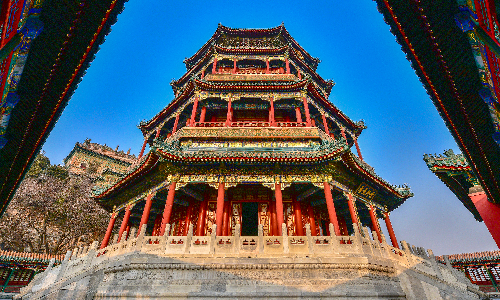
Today we will first go to visit the Hutongs area. Hutongs refer to the small alleys in the old city of Beijing. There are thousands of hutongs in Beijing, which were formed in the Yuan Dynasty (1271-1368), Ming Dynasty and Qing Dynasty. The Siheyuan (quadrangle dwellings) in hutong is the symbol of traditional Chinese building. You will visit one local family in Siheyuan. On the visit, you could have a talk with the host who lives here for tens of years. Experiencing Bejinger’s daily life will be interesting
After lunch, we will drive north for two hours to the Mutianyu Great Wall, which is 70 kilometers away from the Hutong area. The Mutianyu Great Wall was built in 1368 in the Ming Dynasty, which is the essence of the Great Wall. Since ancient times, it has been an important military fortress to guard the capital, Bejing. To ascend the Great Wall, there are two options - cable car or chairlift. If you are under 60 years old and like excitement, you can choose the chairlift up. Then you can take the toboggan down, which will round off your Great Wall tour.


 Chengdu
Chengdu Today, you can have a good rest in the morning, and take your time to pack your luggage. Then our guide will transfer you to the airport and you will take the estimated flight HU7547 14:30/17:50 to Chengdu. After arrival, you will meet our Chengdu local guide who will escort you to the hotel. As the capital of the Sichuan Province, Chengdu is a famous tourist destination in the world. Visiting Chengdu in 2022, we can enjoy both amazing attractions and delicious food.
In the morning, we will go to the Chengdu Research Base of Giant Panda Breeding. The giant panda has been on earth for at least 8 million years and is a national treasure of China. The Chengdu Research Base for Giant Panda Breeding is not only the world’s largest conservation base for giant pandas, but also a relaxing place for tourists’ minds and bodies. In order to allow visitors to see the daily life of giant pandas, the staff here will bathe and feed the pandas in public. You will see giant pandas eating bamboos, drinking milk, or playing. If you are a panda lover, this place is a paradise for you. If you are not, you will be a big fan of giant pandas after today.
Then we will visit the Du Fu Thatched Cottage. The Du Fu Thatched Cottage is the place where Du Fu, a great poet of the Tang Dynasty (618-907), lived in his later years. This place houses more than 30,000 volumes of various paper materials and more than 2,000 cultural relics, all of which are related to Du Fu. Du Fu used to work as an official when he was young. He was an upright official but was framed by others and his political ideals could not be realised. After resigning from his official position, he wrote many poems to express his ideals and his dissatisfaction with the society of his time. His poems had a great influence not only on ancient Chinese literature, but also on Japanese literature of the time.
After lunch, we will take a tour of the Chengdu Wuhou Shrine Museum. The Chengdu Wuhou Shrine Museum is the only place in China that the emperor and his minister are both enshrined. According to the Records of the Three Kingdoms, after Liu Bei, the emperor of Shu Han Kingdom (221-263), died in 223, his coffin was brought to Chengdu and buried here. Zhuge Liang, the greatest contributor to helping Liu Bei build the kingdom and one of the most legendary figures in Chinese history, is also enshrined here. You will have a deeper understanding of the history of the Three Kingdoms Period (220-280) of ancient China after the visit.
Then we will move to Jinli Street. The legendary Jinli Street was once one of the oldest and most famous commercial streets. It was famous all over the country as early as the Qin Dynasty (221BC-207BC). Du fu mentioned Jinli many times in his poems. “Jin” means prosperity, and the word “Li” refers to the street. Jinli Street is now one of the most popular attractions in Chengdu.


After breakfast, we will drive south for two hours to the Leshan Giant Buddha, which is 150 kilometers from the city center. The Leshan Giant Buddha is 71 meters high and is the largest cliff stone carving statue in China. Why was such a huge Buddha statue built here? A Buddhist master, Haitong passed by this place and found that many boats sunk in flood season every year. So he summoned many people to cut mountains and stones at the intersection of the Min River, Qingyi River and Dadu River to build a Buddha statue to control floods. There are 1051 hair buns on the head of the Buddha, and each of them is well carved. In addition, the Buddha has an excellent drainage system with drainage ditches on both sides, which has protected the Buddha statue from being corroded by rain for thousands of years.
After lunch, we will head north for a two-hour drive to the Huanglongxi Ancient Town, which is 152 kilometers from the Leshan Giant Buddha. The Huanglongxi Ancient Town has a history of more than 1700 years and is called the backyard garden of the Chengdu people, providing a good place for summer vacation. Although it is a tourist attraction, there are still many local residents. The stream flows in front of the ancient buildings, creating a pleasant living atmosphere.
After enjoying the ancient town, your tour guide will take you to the hotel.


 Lhasa
Lhasa In the morning, your guide will escort you to the airport and you will take the estimated flight CA4445 13:40/16:05 to Lhasa. Upon arrival, you will meet the local guide at the airport and be transferred to the hotel. On your way to the hotel, you will see the Yarlong Tsangpo River. Yarlong Tsangpo River is a must-see when you visiting Tibet in 2022. It was called “Mount Everest of Rivers”, and its source is the Gema Yangzong Glacier in the northern foothills of the Himalayas in southwestern Tibet at an altitude of about 6,020 meters. Lhasa is located in the middle of Qinghai-Tibet Plateau, with an average altitude of 3,650 meters. Of course, we should especially respect local customs. The biggest taboo of Tibetans is killing, and Buddhists who have been ordained are even stricter in this respect. Although they eat beef and mutton, they don’t slaughter them with their own hands. Tibetans are absolutely forbidden to eat donkeys, horses and dogs, and people in some areas do not eat fish.
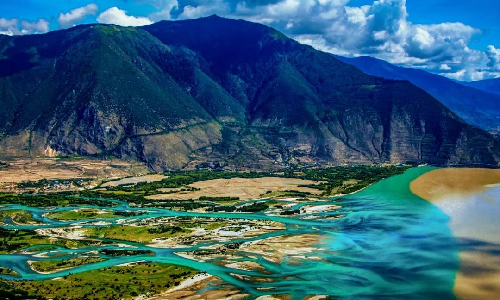
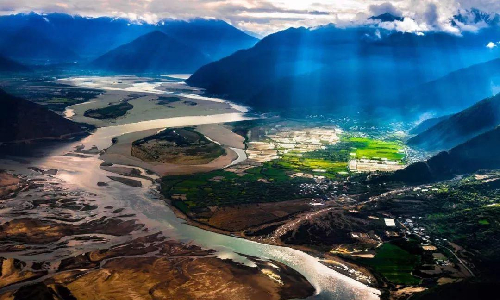
After breakfast, we will go to the Potala Palace. The Potala Palace is more than 200 meters high, with 13 floors in appearance and only 9 floors inside. With a history of 1300 years, Potala Palace was built in the 7th century AD. In the 730s, Srongtsen Gampo, the 33rd king of Tubo Kingdom (633-842), moved its capital to Lhasa and built Potala Palace as the royal palace. In 1994, the Potala Palace was listed as a world cultural heritage.
After lunch, we will visit the Jokhang Temple. With a history of more than 1,300 years, it has a supreme position in Tibetan Buddhism. The Jokhang Temple was built in the heyday of the Tubo Kingdom in the seventh century. According to legend, it was built to enshrine a statue of 8-year-old Sakyamuni. The Buddha statue was brought from Kathmandu by the Nepalese Princess Chizun who was married to the Tubo king Srongtsen Gampo at the time.
Then you will have some free time on Barkhor Street. In Tibetan, “Barkhor” means “circumambulation”. The original Barkhor Street is only a small road around Jokhang Temple, which is called the “Holy Road” by Tibetans. It is now a famous circumambulating road and commercial center in Lhasa, which completely preserves the traditional appearance and living style of the local people.

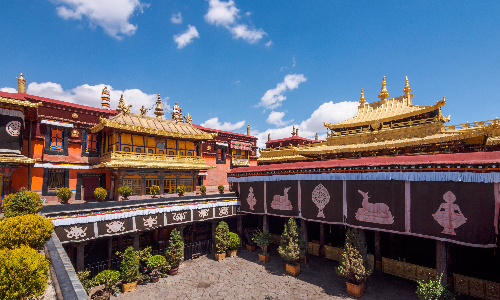
After breakfast, we will go to the Drepung Monastery. The Drepung Monastery is a Gelug Sect temple of Tibetan Buddhism in the western suburbs of Lhasa. Drepung Monastery is located on the south slope of Genpeiwuzi Mountain. The whole temple is large in scale, and rows of white buildings cover the slope, which makes the temple look like huge rice piles from afar, hence its name-Drepung Monastery(Drepung means “gathering rice” in Tibetan).
After lunch, your guide will take you to the Sera Monastery. There are tens of thousands of Vajra Buddha statues preserved in the Sera Monastery, most of which were made in Tibet. There are also many bronze Buddha statues brought from inland China or India. In addition, a large number of original colorful murals are preserved on the walls of the Buddhist halls. In Sera Monastery, there is also a block-printed version of "Kanjuer"(an encyclopedia of ancient Tibet) given by Emperor Yongle of the Ming Dynasty. This Tibetan encyclopedia has been well preserved so far, reflecting the Ming Dynasty's jurisdiction over Tibet.
Then we will move to the Norbulingka Garden, which is located in the western suburb of Lhasa. Founded in the 1840s, it is a typical Tibetan-style garden where the Dalai Lamas spent their summer. After more than 200 years of expansion, the whole garden covers an area of 360,000 square meters. You can enjoy the Tibetan-style garden building as well as a variety of plateau plants here.
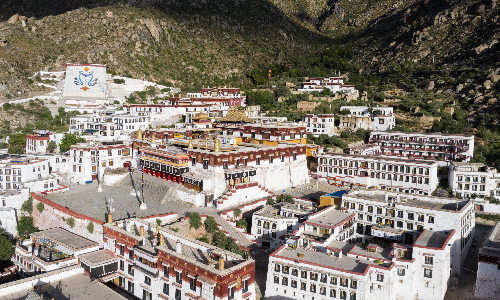
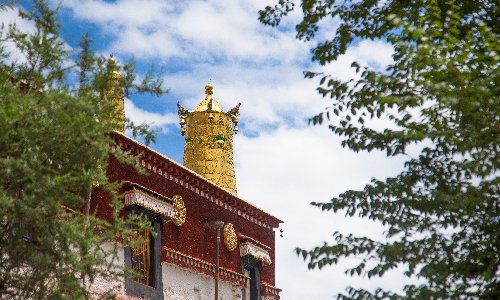
After breakfast, we will head southwest for a one-hour drive to the Dadong Village, which is 27 kilometers from the city center. Dadong Village is surrounded by mountains on all sides. The air here is very fresh. Walking on a quiet street, you may see old people wearing traditional Tibetan costumes sitting in front of their homes to rest. Here, you can see the real daily life of Tibetan people.
After lunch, we will head southwest for a two-hour drive to Yamdrok Lake, which is 86 kilometers from the Dadong Village. It is the largest inland lake in the northern foot of the Himalayas, with beautiful mountains surrounded. Yamdrok Lake covers an area of 675 square kilometers and the lake surface is 4,441 meters above sea level.
And then your guide will take you back to the hotel.
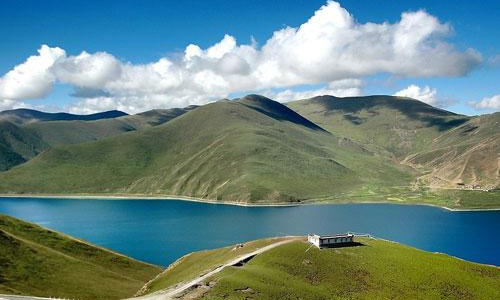
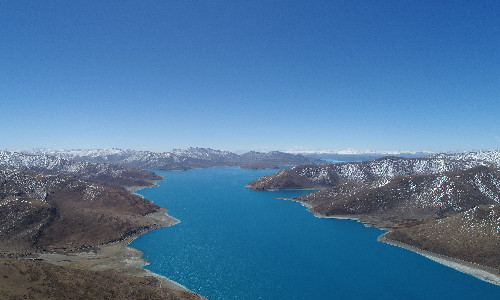
 Tsetang
Tsetang Lhasa
Lhasa After breakfast, we will drive southeast to the Yunbulhakang Palace. As it is 161 kilometers from the city center, it will take us 2 hours to arrive there. Yongbulhakang Palace is located on Zhaxici Mountain. “Yongbul” means “doe”, because the shape of the Zhaxici Mountain resembles a doe. “Lhakang” means “temple”. Songtsen Gampo and his wife came to live here every summer.
After lunch, we will visit the Trandruk Monastery. The monastery has a history of 1300 years. In Chinese, Trandruk Monastery means " Dragon Monastery ". According to legend, this place used to be a lake with evil dragons lived in it. Songtsen Gambo wanted to drain the water to build a temple here, but because of the evil dragons, he couldn't fill the lake. He asked the two Buddhist masters to fight dragons. After the dragons were defeated, the lake dried up. Later, a temple was built here and named Trandruk Monastery.
Then we will visit the Samye Monastery, which was built in the Tubo Kingdom in the 8th century AD. The buildings in the temple are laid out according to the Buddhist cosmology. The architecture style of the central Buddhist hall is fusion of Tibetan, Han and Indian styles, so the Samye Monastery is also known as Three Style Monastery.
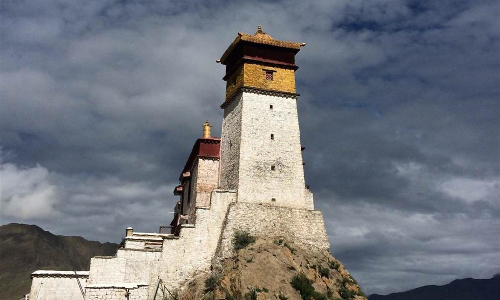

After breakfast, your guide will take you to the airport according to your flight. You will fly back to your sweet home.
Editor: Liu Shujun
Proofreader: Summer Hou
| City | Five Star hotel list | Four Star hotel list |
|---|---|---|
| Beijing | Sunworld Dynasty Hotel Beijing Wangfujing | Sunworld Hotel Wangfujing |
| Chengdu | Sofitel Chengdu Taihe | Holiday Inn Express Chengdu Jinniu |
| Lhasa | Shangri-La Hotel, Lhasa | Thangka hotel |
 |
![]() About your child or infant, please contact us for a discounted price.
About your child or infant, please contact us for a discounted price.



We started with a few days in Beijing & ended in Shanghai, from where we visited the Forbidden City and Great Wall. In between we visited Terra Cotta Warriors Museum, Panda Base, Shanghai Disneyland.

We had a wonderful holiday in China which will remain long in the memory. China is a breathtakingly beautiful country full of splendid temples and palaces, mountains and rivers, peaceful rural scenes and bustling shopping streets.
 QUICK ENQUIRY
QUICK ENQUIRY